Geranyl acetate
Synonym(s):trans-3,7-Dimethyl-2,6-octadien-1-yl acetate;trans-3,7-Dimethyl-2,6-octadienyl acetate
- CAS NO.:105-87-3
- Empirical Formula: C12H20O2
- Molecular Weight: 196.29
- MDL number: MFCD00015037
- EINECS: 203-341-5
- SAFETY DATA SHEET (SDS)
- Update Date: 2025-12-25 11:31:46

What is Geranyl acetate?
Description
Geranyl acetate has a pleasant, flowery odor reminiscent of rose lavender. It has a burning taste, initially somewhat bitter and then sweet. It is produced from geraniol by acetylation or by fractional distillation of essential oils in which it is present.
Description
Geranyl acetate is a monoterpene that has been found in C. sativa with diverse biological activities. It reduces compound action potential (CAP) peak amplitude in isolated frog sciatic nerves (IC50 = 0.51 mM). Geranyl acetate inhibits the radial growth of M. gypsum, T. vercossum, and C. tropicalis on solid media. It is sporicidal against B. subtilis when used at a concentration of 1% in an agar diffusion assay. Geranyl acetate inhibits growth of COLO 205 cells (IC50 = 30 μM) via induction of DNA damage, cell cycle arrest at the G2/M phase, and mitochondrial apoptosis.
Chemical properties
Clear, colorless liquid; odor of lavender. Soluble in alcohol and ether; insoluble in water and glycerol. Combustible.
Chemical properties
Geranyl Acetate occurs in varying amounts in many essential oils: up to 60% in oils from Callitris and Eucalyptus species and up to 14% in palmarosa oil. A smaller amount occurs in, for example, geranium, citronella, petitgrain, and lavender oils. Geranyl acetate is a liquid with a fruity rose note, reminiscent of pear and slightly of lavender. It is used frequently in perfumery not only to create floral, fruity nuances (e.g., rose) but also for citrus and lavender notes. A small amount is added to fruit aromas for shading.
Chemical properties
Geranyl acetate has a pleasant, fowery odor reminiscent of rose lavender It has a burning taste, initially somewhat bitter and then sweet.
Occurrence
Reported found in a large number of essential oils; Ceylon citronella, palmarose, lemongrass, petitgrain, neroi bigarade, geranium, coriander, lavender, carrot, sassafras, in various Callitris species (C verrucosa, C robusta, and others) and Eucalyptus species (E acervula, E urnigera, etc ) A 60% level has been reported in the essential oil of Eucalyptus macar- thuri and up to 50% in the essential oil of Orthodon citraliferum; also identifed in bitter orange essential oil and Cymbopogon citratus oil Also reported found in citrus peel oils and juices, black currants, pineapple, celery seed, cinnamon, ginger, pepper- mint oil, corn mint oil, nutmeg, mace, thymus, hop oil, beer, rum, grape wines, coffee, tea, passion fruit, tomato, almond, muscal grape, cardamom, coriander leaf and seed, tarragon, lovage, Ocimum basilicum, laurel, myrtle leaf and berry, rosemary, clary sage and calabash nutmeg
The Uses of Geranyl acetate
β-Geranyl Acetate is found in essential oils such as Moroccan commercial essential oils which has anti-oxidant, anti-inflammatory and anti-proliferative activities; and in Salvia scabiosifolia from Bulgaria.
The Uses of Geranyl acetate
Perfumery, flavoring
What are the applications of Application
Geranyl acetate is has anti-oxidant, anti-inflammatory and anti-proliferative activities
Definition
ChEBI: A monoterpenoid that is the acetate ester derivative of geraniol.
Preparation
From geraniol by acetylation or by fractional distillation of essential oils in which it is present.
Aroma threshold values
Detection: 9 to 460 ppb.
Taste threshold values
Taste characteristics at 20 ppm: green, foral, fruity with a citrus nuance.
General Description
Clear colorless liquid with an odor of lavender.
Air & Water Reactions
Insoluble in water.
Reactivity Profile
Geranyl acetate should be protected from light. Geranyl acetate reacts with strong oxidizing agents.
Fire Hazard
Geranyl acetate is probably combustible.
Flammability and Explosibility
Non flammable
Safety Profile
Mildly toxic by ingestion. A human skin irritant. Mutation data reported. Combustible liquid. When heated to decomposition it emits acrid smoke and irritating fumes. See also ESTERS.
Purification Methods
Purify the fragrant smelling geranyl acetate by fractional distillation at as high a vacuum as possible. It is very soluble in EtOH but insoluble in H2O. [Beilstein 2 H 140, 2 I 65, 2 II 153, 2 III 299, 2 IV 204.]
Properties of Geranyl acetate
| Melting point: | 25°C |
| Boiling point: | 236-242 °C(lit.) |
| Density | 0.916 g/mL at 25 °C |
| vapor density | 6.8 (vs air) |
| vapor pressure | 0.07 mm Hg ( 20 °C) |
| refractive index | n |
| FEMA | 2509 | GERANYL ACETATE |
| Flash point: | 220 °F |
| storage temp. | 2-8°C |
| solubility | Chloroform (Slightly), Ethyl Acetate (Slightly), Methanol (Slightly) |
| form | neat |
| form | Liquid |
| Specific Gravity | 0.916 |
| color | Colourless |
| Odor | at 100.00 %. floral rose lavender green waxy |
| Water Solubility | <0.1 g/100 mL at 20 ºC |
| JECFA Number | 58 |
| CAS DataBase Reference | 105-87-3(CAS DataBase Reference) |
| NIST Chemistry Reference | 2,6-Octadien-1-ol, 3,7-dimethyl-, acetate, (E)-(105-87-3) |
| EPA Substance Registry System | trans-Geraniol acetate (105-87-3) |
Safety information for Geranyl acetate
| Signal word | Warning |
| Pictogram(s) |
 Exclamation Mark Irritant GHS07 |
| GHS Hazard Statements |
H315:Skin corrosion/irritation H317:Sensitisation, Skin H412:Hazardous to the aquatic environment, long-term hazard |
| Precautionary Statement Codes |
P261:Avoid breathing dust/fume/gas/mist/vapours/spray. P264:Wash hands thoroughly after handling. P264:Wash skin thouroughly after handling. P272:Contaminated work clothing should not be allowed out of the workplace. P273:Avoid release to the environment. P280:Wear protective gloves/protective clothing/eye protection/face protection. P302+P352:IF ON SKIN: wash with plenty of soap and water. |
Computed Descriptors for Geranyl acetate
Geranyl acetate manufacturer
New Products
Indole Methyl Resin tert-butyl 9-methoxy-3-azaspiro[5.5]undecane-3-carboxylate Boc-His(Boc)-OH 2-CTC Resin 4-Chloro-7-tosy1-7Hpyrrolo[2,3-d]pyrimidine 5,7-Dibromo-1H-indole 2,5-dichloro-N-hydroxy-4,6-dimethylpyridine-3-carboximidamide 2,2-Dimethoxy-7-azaspiro[3.5]nonane hydrochloride 4-chloromethyl-5-methyl-1,3-dioxol-2-one (DMDO-Cl) R-2-BENZYLOXY PROPIONIC ACID 1,1’-CARBONYLDIIMIDAZOLE 1,1’-CARBONYLDI (1,2-4 TRIAZOLE) N-METHYL INDAZOLE-3-CARBOXYLIC ACID 4-((2-hydroxyethyl)thio)benzoic acid 1-(TERT-BUTOXYCARBONYL)-2-PYRROLIDINONE Methyl 6-methylnicotinate 3-Pyridineacrylic acid tert-Butyl carbazate TETRAHYDRO-2H-PYRAN-3-OL 2-((4-morpholinophenylamino) (methylthio) methylene) malononitrile 3-(4-morpholinophenylamino)-5-amino-1H-pyrazole-4-carbonitrile 2,4-dihydroxybenzaldehyde 1,3-Diethyl-1,3-Diphenylurea Methyl 2-methylquinoline-6-carboxylateRelated products of tetrahydrofuran
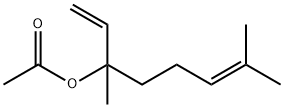

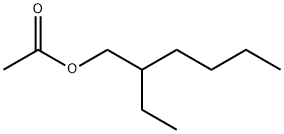
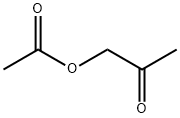

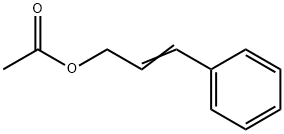
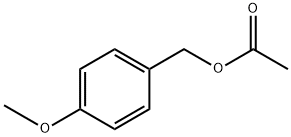

You may like
-
 Geranyl acetate CAS 105-87-3View Details
Geranyl acetate CAS 105-87-3View Details
105-87-3 -
 Geranyl acetate 97.00% CAS 105-87-3View Details
Geranyl acetate 97.00% CAS 105-87-3View Details
105-87-3 -
 Geranyl Acetate CAS 105-87-3View Details
Geranyl Acetate CAS 105-87-3View Details
105-87-3 -
 Geraniol acetate CAS 105-87-3View Details
Geraniol acetate CAS 105-87-3View Details
105-87-3 -
 Geranyl acetate CAS 105-87-3View Details
Geranyl acetate CAS 105-87-3View Details
105-87-3 -
 Geranyl acetate CAS 105-87-3View Details
Geranyl acetate CAS 105-87-3View Details
105-87-3 -
 Liquid Natural Geranyl AcetateView Details
Liquid Natural Geranyl AcetateView Details
105-87-3 -
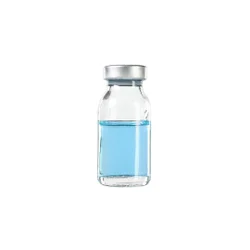 Geranyl Acetate Aromatic Chemicals, For LaboratoryView Details
Geranyl Acetate Aromatic Chemicals, For LaboratoryView Details
105-87-3
